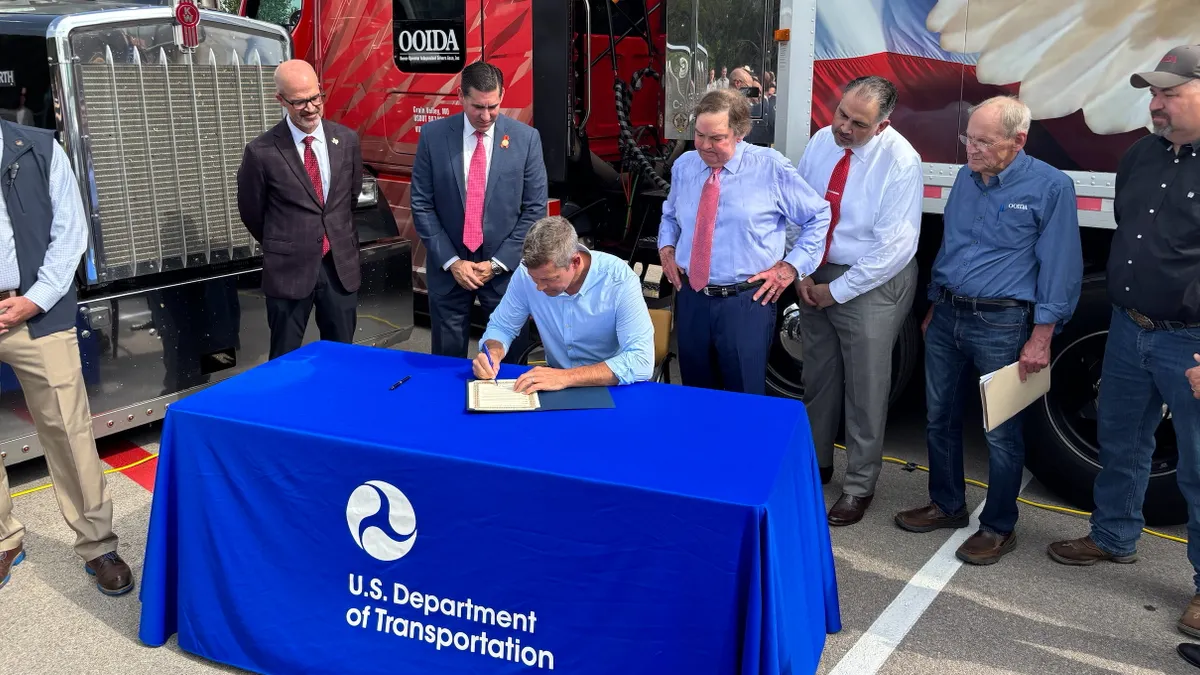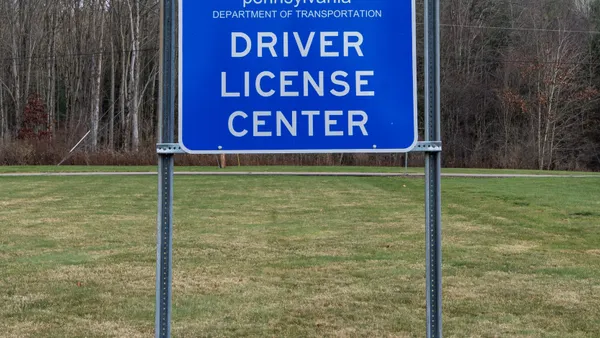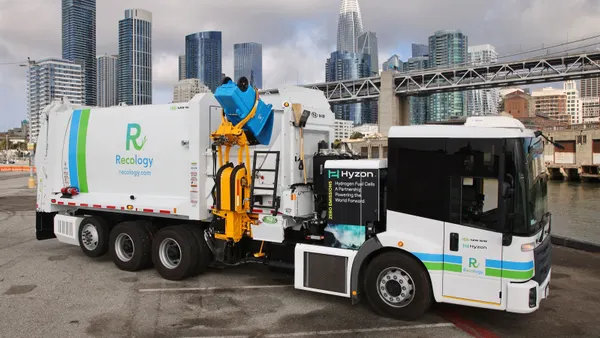Starting June 25, 2025, state and federal officials will enforce out-of-service violations for failure to comply with English-language proficiency, following several rule changes made in May.
The Federal Motor Carrier Safety Administration circulated a new enforcement policy on May 20, asking officials to begin all roadside inspections in English. If the inspector suspects the driver lacks language proficiency, the official can then subject drivers to a test. Drivers who fail the test can be cited for a violation, effective immediately. Once the North American Standard Out-of-Service Criteria is updated, inspectors will also place the driver out-of-service for non-compliance with the language standard.
The Commercial Vehicle Safety Alliance will officially add non-compliance with English-proficiency requirements to the North American Out-of-Service Criteria on June 25, per a May 1 press release. Both the FMCSA and CVSA’s rule changes come as a result of an executive order from President Donald Trump, in which he called on organizations to increase enforcement of English-language proficiency in trucking.
A driver operating in the U.S. can be placed out of service if they “cannot read and speak the English language sufficiently to communicate with the safety official to respond to official inquiries and directions in accordance with FMCSA enforcement guidance,” according to the CVSA’s press release.
Officials will assess whether drivers can “sufficiently” communicate based on a two-step test, detailed in the FMCSA’s internal enforcement guidelines.
First, a driver will be subjected to an interview. An official will inform the driver to respond in English, then make a series of inquiries and assess whether the driver can adequately communicate. The guideline prohibits a driver from using tools that facilitate communication, such as interpreters, cue cards or smartphone applications.
If a driver fails this first test, the inspector can cite the driver for a violation. If the driver passes, the inspector can then commence a second test assessing the driver’s understanding of highway signs.
Details of the two tests were redacted from the internal enforcement policy, but the FMCSA released more details in a May 22 notice to motor carriers looking to assess their drivers’ English proficiency.
In those guidelines the FMCSA advises motor carriers to ensure drivers can answer questions in English on their trip’s origin and destination, amount of time spent on duty, logbook and driving time, driver’s license details, load’s shipping papers and vehicle equipment.
For the highway assessment, motor carriers should show drivers both common highway signs and examples of dynamic highway signs, and ask drivers to explain their meaning. However, the explanations can be made in any language “provided the manager is able to understand the driver’s explanation,” per the May 22 notice, which the FMCSA says is non-binding.
Any driver operating in the U.S. has long been required to be sufficiently proficient in English.
But officials had enforced the rule inconsistently ever since the CVSA removed it from its out-of-service criteria in 2015. The CVSA’s rule change prompted the FMCSA to do the same in 2016, according to an enforcement memo published at the time. The 2016 memo was officially overturned last week, in favor of the FMCSA’s most recent guidelines.
Even when the rule was enforced, though, only a small percentage of drivers cited with the violation were placed out of service. Over 100,000 drivers received a “non-English speaking driver violation” in 2014 alone, according to statistics published in 2015, but just over 4,000 of those violations warranted placing a driver out of service.
The Trump administration's move to increase enforcement of the rule comes amid two trends. First, in March, the administration made English the country’s official language, and pushed to update federal guidance accordingly. Then, in April, the American Trucking Associations specifically asked the administration to make English-language proficiency an out-of-service criteria as part of a series of enforcement requests.










